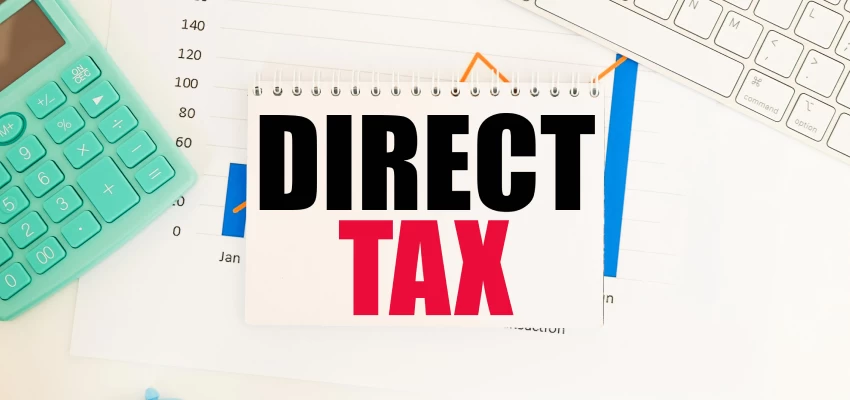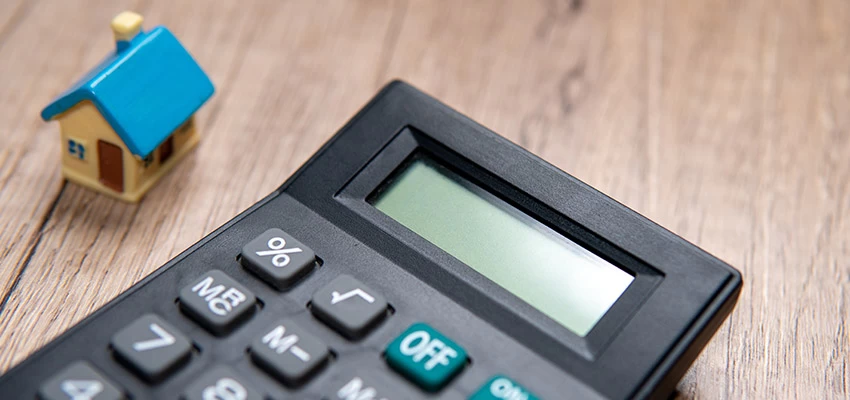Introduction
Section 115BAA is a reduced corporate taxation scheme introduced for domestic companies vide the Taxation Laws (Amendment) Act, 2019 (w.e.f. AY 2020-21). Once opted for, the domestic company would be taxed at 25.17% (effective tax rate inclusive of surcharge and cess) during the lifetime of the said company in respect of its total income.
This Article addresses an issue that may arise regarding the treatment of unclaimed portion of additional depreciation in respect of companies with substantial capital expansion in the relevant assessment year while opting for Section 115BAA of the Income Tax Act, 1961 (“IT Act”).
Treatment of additional depreciation under Section 115BAA
The benefit under Section 115BAA of the IT Act is available subject to computation of total income in the prescribed manner, wherein certain deductions are restricted which are otherwise available for a domestic company. Notable among the deductions which are disallowed is additional depreciation which is to be claimed in terms of the provisions of Section 32(1)(iia) of the IT Act.
Section 32(1)(iia) of the IT Act provides for additional depreciation at 20% of the actual cost of plant or machinery to an assessee engaged in the business of manufacture or production of any article or thing. However, in cases where the plant or machinery has been put to use for a period less than 180 days during the assessment year, the deduction shall be restricted to 50% of the amount computed for the said assessment year and the deduction for balance 50% would be allowed in the immediately succeeding assessment year.
In terms of Section 115BAA(2) of the IT Act, the total income shall be computed without claiming additional depreciation under Section 32(1)(iia) of the IT Act. Further, any loss carried forward or depreciation from any earlier assessment years shall not be set off against the income if such losses or depreciation is attributable to additional depreciation. Even though such carried forward loss or depreciation cannot be set off while computing the total income, Section 115BAA(3) of the IT Act provides that any loss or depreciation of the aforesaid nature shall be deemed to have been given full effect and no further deduction for such loss or depreciation shall be allowed for any subsequent assessment year.
The proviso[1] to Section 115BAA(3) of the IT Act clarifies the treatment to be given to the written down value (“WDV”) of the block of assets in respect of which depreciation of the aforesaid nature is foregone. In terms of the said proviso, in cases where the depreciation allowance has not been given full effect to, corresponding adjustment shall be made to the written down value of such block of assets upon opting for reduced taxation under Section 115BAA of the IT Act. The proviso also states that such adjustment to WDV will have to be made in a manner prescribed. However, till date no rules have been introduced prescribing the manner of making such adjustment. The question that arises is whether the adjustment referred to in the Proviso is an upward adjustment which increases the WDV of the block or is a downward adjustment which reduces the WDV of the block of asset?
The query attains particular significance in respect of additional depreciation where the asset was put to use for a period less than 180 days in the earlier assessment year. In such a scenario, the assessee would claim 50% of the additional depreciation in the earlier assessment year and the balance 50% of the additional depreciation is claimed in the relevant assessment year. By opting for Section 115BAA, the assessee will not be entitled to claim the balance 50% of the additional depreciation in the computation of total income for the relevant assessment year. In addition to forgoing the balance 50% of the additional depreciation, it needs to be ascertained whether an assessee opting for Section 115BAA is required to make a suitable adjustment to the WDV of the block of asset.
The following illustration unravels the puzzle:
| Particulars |
|
FY 2018-19 |
FY 2019-20 |
| Opening WDV of block of assets |
|
100.00 |
145.00(before adjustment) |
| Additions made during the year |
|
100.00 |
- |
| Normal depreciation @ 30%Full depreciation on WDV and depreciation at half rate on additions made(Assuming asset has been put to use for less than 180 days – only 50% allowable) |
= (100 x 30%)+ (100 x 15%) |
45.00 |
43.50 |
| Additional depreciation @ 20%(Assuming asset has been put to use for less than 180 days – only 50% allowable) |
|
10.00 |
- |
| WDV |
|
145.00 |
101.50 |
In the said illustration, assuming the assessee is opting for reduced taxation under Section 115BAA of the IT Act for the FY 2019-20, whether the opening WDV of the block of asset would be INR 145/- or INR 135/- (i.e. post adjusting the balance 50% of the additional depreciation)?
Challenge posed by the Proviso
One view is that the balance 50% of the additional depreciation, being depreciation allowance, which has not been given full effect to prior to the relevant assessment year, corresponding adjustment is required to be made to the WDV of the block of assets. Since the adjustment to WDV is provided for by way of Proviso to Sub-section (3) which deems to give full effect to depreciation which has not been claimed, the adjustment to WDV is considered to be downward adjustment of WDV, thereby achieving the objective of giving full effect to additional depreciation.
The above conservative view has the merit of mitigating any risk, particularly since the failure to satisfy the conditions of computation of total income under Section 115BAA, could render the option exercised by the assessee invalid for relevant assessment years and subsequent assessment years as well. Additionally, it stands clarified that the option under Section 115BAA need not be exercised in AY 2020-21 and the assessee could opt for Section 115BAA in a subsequent assessment year after availing the additional depreciation of the relevant assessment year.
However, this conservative approach may result in significant tax cost to the assessee. Drawing reference to the aforesaid illustration, the same can be explained in the following manner:
- the assessee would be required to reduce the balance 50% of additional depreciation i.e. INR 10/- from the WDV of the block of asset resulting in a reduced WDV of INR 135/- (INR 145- INR 10) for the FY 2019-20. However, the assessee would not be allowed to set off such additional deprecation against his income for the FY 2019-20;
- additionally, the assessee would be eligible to compute depreciation for the subsequent assessment years only on the reduced WDV of INR 135/- instead of INR 145/-.
An alternative position
This leads us to the alternative proposition that the Proviso is not applicable to balance 50% of the unclaimed portion of additional depreciation and therefore no adjustment is to be made to WDV on this count during the relevant assessment year.
Section 115BAA(3) refers to depreciation which is referred to in clause (ii), being depreciation from any earlier assessment year. The Proviso is applicable only to depreciation referred to in Section 115BAA(3) which in turn refers to depreciation as claimed by the assessee during the earlier AYs. Thus 115BAA(3) is not dealing with the unclaimed portion of the balance fifty percent of additional depreciation or additional depreciation if any of the relevant assessment year but only with depreciation from earlier AY. In other words, it can be said that the depreciation referred to in Section 115BAA(3) is restricted only to the depreciation claimed but not fully adjusted during earlier AYs.
Viewed from this angle, the adjustment referred to in the Proviso could only be upward adjustment to WDV. The WDV of the asset for the relevant AY is arrived at after giving effect to the depreciation allowance of the earlier AY. WDV has been defined under Section 43(6) of the IT Act to mean:
WDV of the block of asset in the immediately preceding assessment year
Add: Actual cost of asset acquired during the relevant assessment year
Less: Money payable on account of any asset within the block being sold or discarded or demolished or destroyed during the assessment year
Less: Depreciation actually allowed in respect of that block of asset in relation to the said assessment year
Thus, depreciation allowance of the earlier AY has been adjusted downwards to arrive at the WDV of the relevant AY. In terms of Proviso to Section 115BAA(3), where the depreciation allowance of earlier AY is deemed to have been given full effect to, the assessee is allowed an adjustment to the WDV. This adjustment could only be an upward adjustment (downward adjustment having already been provided for) with the objective of allowing the assessee to claim normal depreciation on that adjustment going forward.
Conclusion
The Proviso to Section 115BAA(3) was not part of the Taxation Laws (Amendment) Ordinance, 2019 and was introduced as part of the Taxation Laws (Amendment) Act, 2019. Thus, the proviso can be credited as conscious addition to the statute with a definite intent. The definite intent of the Proviso is however not forthcoming from the language of the section. Moreover, the fact that no rules have been introduced prescribing the manner of making such adjustment has only confounded the confusion. For instance, the Proviso speaks of adjustments where there is a depreciation allowance which has not been given full effect to prior to the assessment year beginning on the 1st day of April 2020. Where an assessee opts for Section 115BAA(3) is a subsequent year (say, AY 2023-24), whether the benefit of adjustment under the Proviso will be available to the extent of depreciation allowance which is deemed to have been given full effect to.
The newly introduced Section 115BAC which provides an alternative scheme for taxation for individuals and HUF also contains a similar Proviso. While Section 115BAC could be opted for in any AY, the Proviso provides for adjustment only in respect of depreciation allowance which has not been given full effect to prior to AY 2020-21.
A similar proviso can be found in Section 115BA of the IT Act which provides for reduced taxation to domestic manufacturing companies set up on or after Mar 1, 2016. Given that the said Section is applicable only to newly set up companies, the question of carry forward of unabsorbed depreciation does not arise and therefore, the Proviso seems to be redundant to that extent as far as Section 115BA is concerned.
The Proviso fraught with ambiguity could lead to varying interpretations. As the Proviso is a conscious addition made with a definite intent, it is imperative that the Board clarifies the objective of introducing the same by prescribing appropriate rules in this regard.
[The authors are Partner and Senior Associate, respectively, in Direct Tax Team, Lakshmikumaran & Sridharan Attorneys, Bengaluru]
- [1] The Proviso to Section 115BAA(3) of the IT Act reads in the following manner:
“Provided that where there is a depreciation allowance in respect of a block of asset which has not been given full effect to prior to the assessment year beginning on the 1st day of April, 2020, corresponding adjustment shall be made to the written down value of such block of assets as on the 1st day of April, 2019 in the prescribed manner, if the option under sub-section (5) is exercised for a previous year relevant to the assessment year beginning on the 1st day of April, 2020.”











